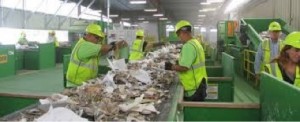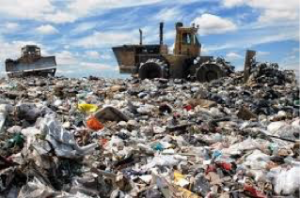The waste management sector includes all personnel who collect, sort and dispose of waste. Different methods of waste management emit different types of occupational hazards. Depending on the origin of the waste, workers coming in contact with it are potentially exposed to an array of chemicals, dusts, bioaerosols and biological hazards.
 Municipal waste management poses a high risk of exposure to mould, other fungi, mycotoxins and endotoxins due to the decomposition of municipal waste and mouldy furnishings. This is especially prevalent amongst waste collectors and sorters.
Municipal waste management poses a high risk of exposure to mould, other fungi, mycotoxins and endotoxins due to the decomposition of municipal waste and mouldy furnishings. This is especially prevalent amongst waste collectors and sorters.
Composting also poses a very high risk of exposure to known allergens such as thermophilic actinomycetes and Aspergillus fumigatus.
Waste collectors and sorters are also at risk of chemical exposure from, for example containers containing residual hazardous waste such as old paint, pesticide and herbicide containers and broken fluorescent light bulbs (mercury). Airborne dust can also pose a problem especially during dry weather on landfill sites and in enclosed waste soring areas.
 Noise and vibration exposures can also occur in this sector due to the use of heavy machinery and plant.
Noise and vibration exposures can also occur in this sector due to the use of heavy machinery and plant.
- Assessment of exposure to airborne moulds, bacteria and endotoxins
- Assessment of exposure to dusts and chemicals
- Recommendation for control of RCS and stone dust
- Workplace noise assessments
- Whole body and hand arm vibration assessment
Useful Resources and Links:

